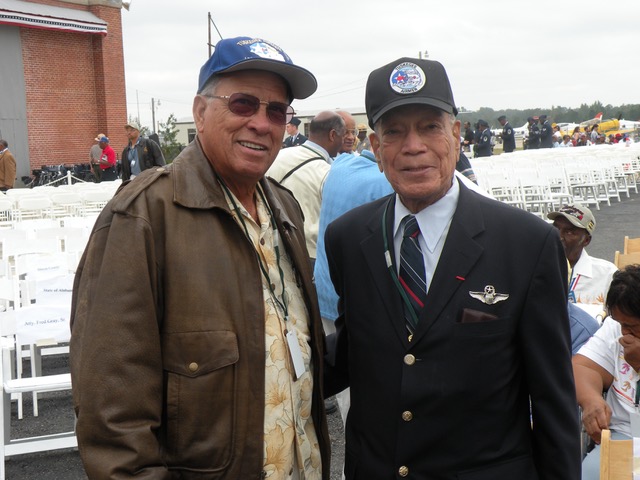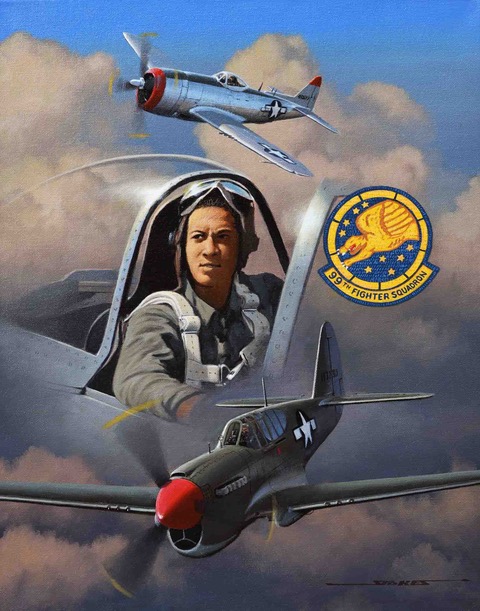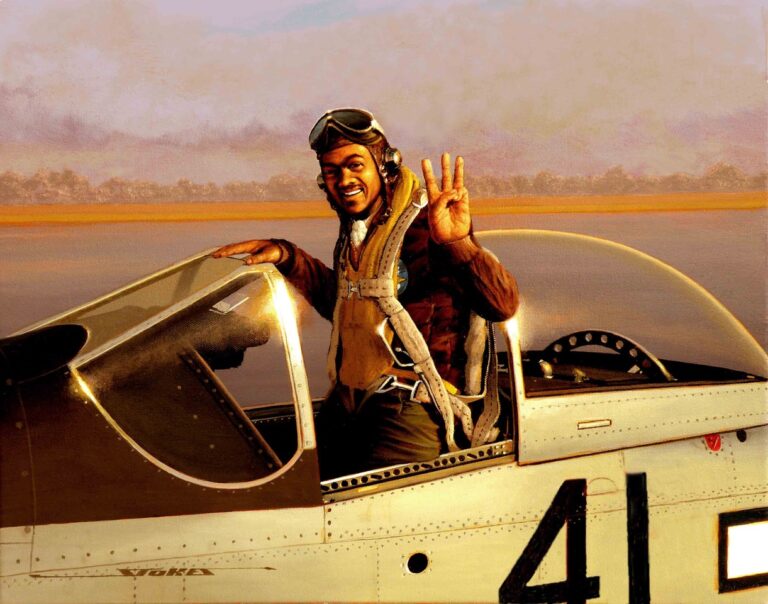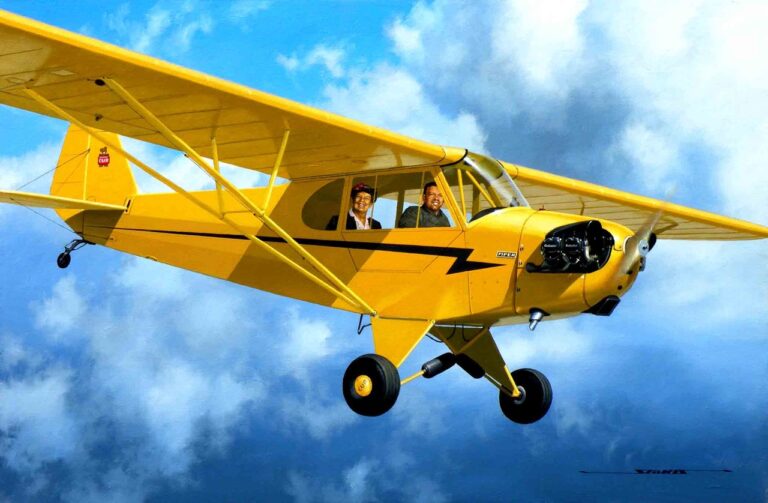I met Rusty Burns while I was painting the Tuskegee Airmen mural at the Palm Springs Air Museum. I was up a ladder in the middle of the painting when I noticed a fellow watching me. I asked him if I could answer any questions. His reply was, “You’re painting me!” I came down from the ladder to shake his hand. That was the start of a great friendship!
Rusty was born Isham Albert Burns, in 1925 in New Orleans, Louisiana. One of his high school teachers couldn’t remember Isham and started calling him Rusty. The name stuck!
Burns developed his love for aviation in the fifth grade at Corpus Christi Catholic School. In 1939, he moved to Los Angles, California with his family where he studied aeronautics at Jordon High School. At age sixteen, he worked at Burbank Airport while learning about aircraft, theory of flight, navigation, and meteorology. In 1942, Burns passed the federal aviation exam. After receiving his diploma in 1943, he was inducted into the United States Army at Fort MacArthur and was sent to Kessler Field in Biloxi, Mississippi. After completing basic training, he became a certified pre-aviation cadet.
Burns received his aviation training at Tuskegee Army Airfield, where he graduated in 1944 as a single-engine pilot making him one of the youngest of the Tuskegee Airmen. During his time at the Tuskegee Institute, he received twelve hours of college classes a day, in addition to his training as a soldier. Burns trained on several aircraft including the BT-13 and the AT-6. He completed his training at Tuskegee in September of 1944 as a part of Class 44-J-SE. He was then assigned to the 99th Fighter Squadron at Godman Field in Kentucky. While with the 99th, he flew P-40 Warhawks and later, P-47N Thunderbolts. After the war ended and he left the Army Air Forces, he returned to Los Angeles and joined the United States Postal Service where he worked for nine years.
Burns returned to aviation after buying and rebuilding his own airplane. In 1955, he opened Rusty’s Flying Service and began giving flight instruction at Compton Airport. He had become one of the few Tuskegee Airmen to return to an aviation career. He trained over five hundred students before selling his business in 1971 to become an aviation consultant. He consulted for several companies in the private sector including Teledyne, Rocketdyne, Rockwell, and North American Aviation. He retired in 1988 after developing a travel service program for the United States government.





